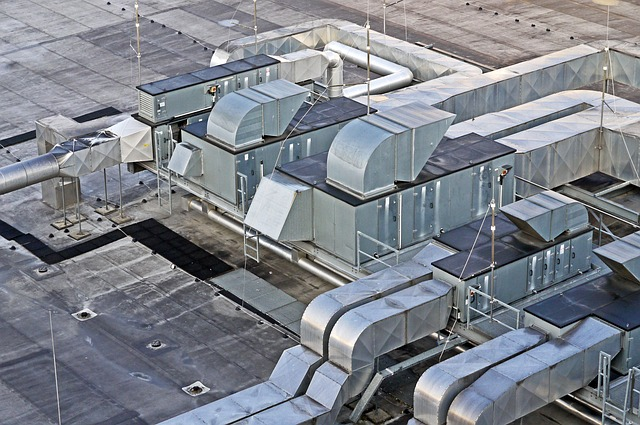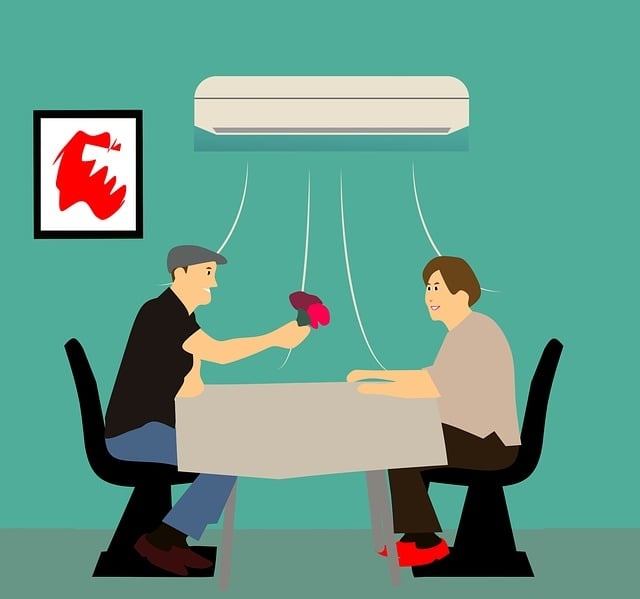What Is An HVAC system?
Photo Credit @partrickl
What is an HVAC System?
What is H V A C? An HVAC system is an abbreviation for Heating, Ventilation, and Air Conditioning system. It is a technology used in buildings, homes, and various indoor spaces to provide comfortable and controlled indoor environments. The primary purpose of an HVAC system is to regulate and maintain the temperature, humidity, and air quality within a designated space to ensure the comfort and well-being of occupants.
The components of an HVAC system can vary depending on the specific requirements and complexity of the installation. However, the basic functions provided by most HVAC systems include:
Heating: This operation provides warmth during colder periods. The most common heating methods include combustion furnaces, boilers, heat pumps, or electric heaters. They generate heat and distribute it throughout the space via ductwork or radiant heating systems.
Ventilation: Ventilation involves the exchange of indoor and outdoor air to maintain air quality and remove pollutants, odors, and excessive moisture. Proper ventilation is crucial to ensuring a healthy indoor environment. Ventilation systems can be natural (through windows and doors) or mechanical (using fans and ducts).
Air Conditioning (Cooling): The cooling component of an HVAC system is responsible for lowering the indoor temperature and humidity during hot weather. Air conditioners or heat pumps are commonly used to cool the air by extracting heat from the indoor air and releasing it outside.
How Does HVAC Work?
HVAC systems provide warm or cool air by transferring heat from somewhere it isn't wanted to somewhere else that makes little difference, such as outside. HVAC equipment is also responsible for improving indoor air quality within a space by bringing in a percentage of fresh outside air while filtering the air before distributing it throughout the area.
HVAC systems can be configured in many different ways for different applications, but the most common HVAC systems are central air units that utilize ducts, fans, heaters, and refrigeration components to distribute hot or cold air throughout a building or home.
Ducts that distribute heated or cooled air are typically made of metal or flexible materials. They are installed within walls, ceilings, or floors to deliver conditioned air to various rooms.
A thermostat is used as the control center of the HVAC system. It allows users to set the desired temperature and control the heating and cooling functions. Modern thermostats often come with programmable or smart features such as reset schedules and occupancy sensors, allowing for more precise temperature control and energy efficiency.
Air filters are an essential component that traps dust, allergens, and other particles present in the air. They help improve indoor air quality by removing pollutants before recirculating the air.
In some cases, HVAC systems may include humidifiers to add moisture to the air during dry conditions or dehumidifiers to remove excess moisture in humid environments. These components help maintain optimal indoor humidity levels. More in my blog post How to Control Moisture and Prevent Mold and Mildew
HVAC systems are crucial for maintaining comfortable indoor environments, promoting energy efficiency, and ensuring the health and well-being of occupants. Regular maintenance and professional servicing of HVAC systems are essential to maximize their efficiency, prolong their lifespan, and avoid potential issues.
Types of HVAC Systems
There are many different types and configurations of HVAC systems available to meet the specific heating and cooling needs of homes and commercial buildings. A specific unit type may be recommended after considering various factors such as location, age, existing ductwork, and geographic climate conditions. As a result, HVAC systems can take on various forms. Your HVAC contractor will assist you in determining the best option that aligns with your needs and budget.
Split System
A split HVAC system is a type of heating, ventilation, and air conditioning system comprised of two main units: an indoor unit and an outdoor unit. The indoor unit is commonly referred to as the central air conditioner and is ducted to the areas requiring heating or cooling. It is one of the most common and widely used configurations in residential and commercial buildings. Depending on your location, the configuration can involve a furnace and air conditioner, an air handler and heat pump, or a furnace and heat pump. Split HVAC systems are efficient, versatile, and easy to install, making them popular for residential and commercial applications.
Packaged Equipment
A package unit includes all of the standard components of a split system, but instead of and indoor and outdoor units, all parts are housed within one piece of equipment. This solution works best for homes or offices with limited indoor space for an air handling or heating unit. Package equipment is commonly placed on a roof with ductwork distributing air throughout the building.
Hybrid Heat Pump
Hybrid heat pumps can be configured as either a split system or a package unit. Heat pumps allow the refrigeration system to operate in either heating or cooling mode in conjunction with an additional heat source such as electric heat strips or a combustion furnace. The heat pump efficiently heats the home during milder seasons like spring and fall, but during the colder weather, typically below 30 degrees F, when the heat pump's performance declines, the backup heat takes over. This hybrid system, also known as a dual-fuel system, offers cost savings as heating the home with a heat pump is more economical than using a furnace 100% of the time.
Ductless Mini-Split
Ductless mini-splits are similar in configuration to a traditional split system in that the ductless mini-split consists of an outdoor unit that contains the compressor and condenser coil, and an indoor air handler mounted directly in the room needing conditioned air. This type of ductless system is ideal for small spaces like tiny homes, studios, server closets, garages, and workshops and is usually not recommended for whole-home applications. A ductless mini-split installation costs much less than other types of units due to not requiring any ductwork. Being ductless has two main drawbacks: limited control over directing conditioned air to specific locations and reduced airflow to areas farthest from the wall-mounted unit.
Ducted Mini-Split
A ducted mini-split is very similar to a ductless unit but will utilize air ducts from the indoor unit. Ducted mini-splits are typically used in a space that has multiple smaller rooms with similar heat loads or to provide conditioned air across a larger room. Both ducted and ductless mini-split units are often configured as heat pumps and are highly efficient, even in colder temperatures. This high efficiency eliminates the need for backup heat sources like electric strip heaters or combustion.
Variable Refrigerant Flow/Variable Refrigerant Volume:
VRF or VRV units expand on all of the benefits of mini-split systems and address some of the cons. A VRF/VRV system is an advanced and energy-efficient HVAC system that provides both heating and cooling to buildings. It is a multi-split system that uses refrigerant as the heat exchange medium to transfer heat between the indoor and outdoor condensing units. As the name suggests, VRF systems have the ability to vary the flow rate of refrigerant to individual indoor units based on their cooling or heating demands. This allows for precise temperature control in different zones or rooms, depending on their specific requirements. VRF systems use refrigerant lines rather than large ductwork, offering more flexibility during installation and enabling better space utilization. VRF technology has gained popularity worldwide due to its energy efficiency, precise temperature control, and the ability to provide simultaneous heating and cooling. It is an excellent choice for applications where zoning, individual control, and energy savings are essential considerations.
By consulting with your HVAC technician, you can find the perfect HVAC system that matches your specific needs, ensuring your home remains comfortable and efficient all year round.
What are the different parts of an HVAC system?
HVAC systems can be very complex, with many different components depending on use and application, but every refrigeration or HVAC system will always include the four main HVAC components consisting of a compressor, condenser, metering device, and evaporator. You can read more about the individual components in my post here. Most common HVAC systems are either set up as a split system or a package unit.
Whether or not your system is a split or packaged unit the components will remain very similar. The HVAC unit will have:
Outdoor coil and fan used to reject heat.
Indoor coil and blower fan to absorb heat.
Compressor to pump the refrigerant (commonly referred to by many homeowners as Freon)
Metering device to meter the refrigerant
Fresh air intake to bring in outside air or provide free cooling when able. Read about What is Free cooling?
Air Filter to improve the air quality ( Read about the Different Types of HVAC Filters and Their Uses HERE.
Copper piping to connect the refrigerant components
Some units may also be equipped with a combustion heater or electric heat strips.
Ductwork to distribute conditioned air.
You can read more about Common HVAC unit components and what they do here.
HVAC Systems Require Regular Maintenance
Photo Credit @mbaumi
As you can probably tell HVAC systems are complex systems that require frequent maintenance to keep everything in operation. Most systems experience issues or failures, because they are not maintained properly. It is necessary that a system is inspected annually, as recommended —typically before heating and cooling seasons in early summer or mid-fall. It is essential to get an HVAC system installed and repaired by an expert locally who knows the system. You can read more about How to Perform HVAC maintenance and Inspections on my post here.
What is the difference between HVAC and AC?
Photo Credit @renedeanda
HVAC and AC are related terms used in the context of heating, ventilation, and air conditioning systems, but they refer to different aspects of the overall system.
HVAC is a broad term encompassing the system responsible for maintaining comfortable indoor environments in buildings, homes, and various indoor spaces. It includes the three main functions listed earlier—heating, Ventilation, and Air Conditioning.
AC (Air Conditioning) is a specific term that refers to the cooling component of an HVAC system. It stands for "Air Conditioning." Air conditioning equipment is designed to provide cooling and dehumidification of indoor air. They work by removing heat from the indoor air and transferring it outside, leaving behind cooler and more comfortable air inside. Typically an AC unit is cooling only but still includes the "ventilation" portion of "HVAC", we just refer it these units as AC instead of VAC.
What HVAC system is right for me?
The ideal HVAC system for your specific needs will rely on several factors, such as your location, home size, budget, and personal preferences for comfort. Your desired HVAC system may prioritize energy efficiency, quiet operation, humidity monitoring, or a combination of these features. Considering these aspects will determine the most suitable combination of units to optimize your home's climate.
It is important to arrange a consultation with a certified HVAC specialist to help guide you in customizing the perfect system for your home or office, taking into account local climate conditions and load calculations. Taking this step will set you on the right path to discovering the best HVAC system tailored to your requirements and preferences.
Photo Credit @emmages









